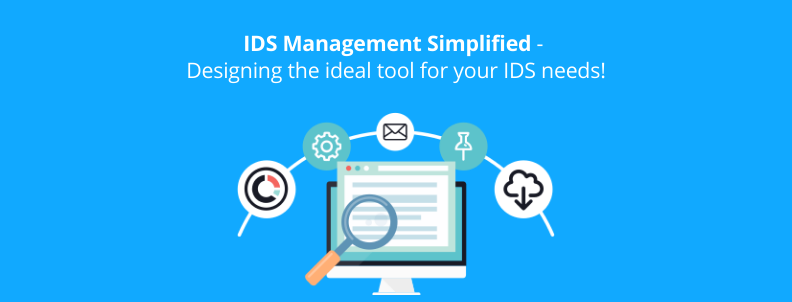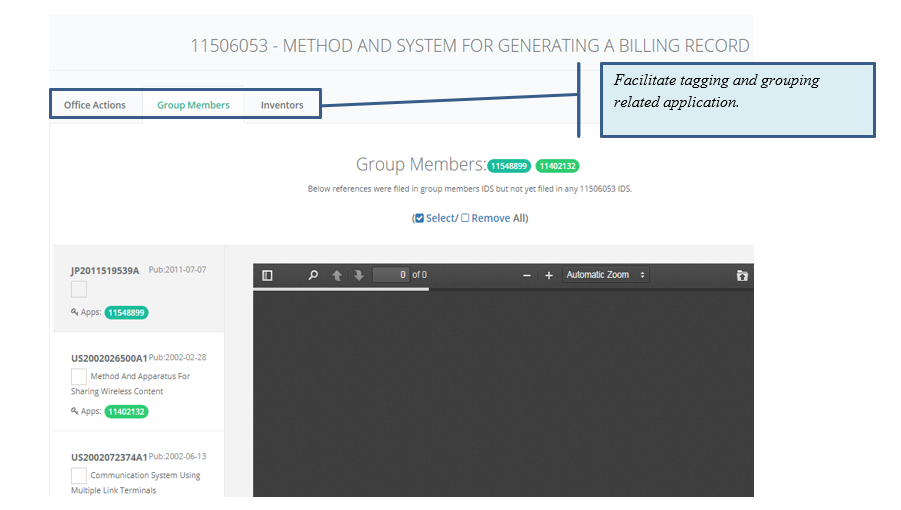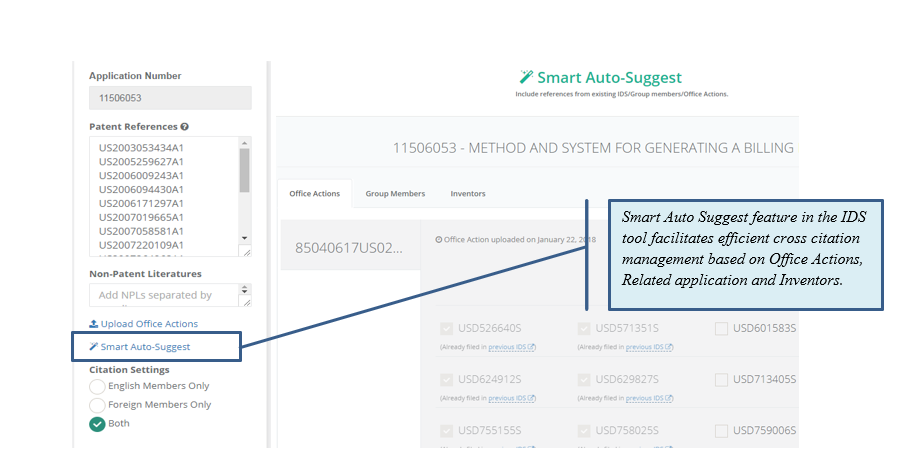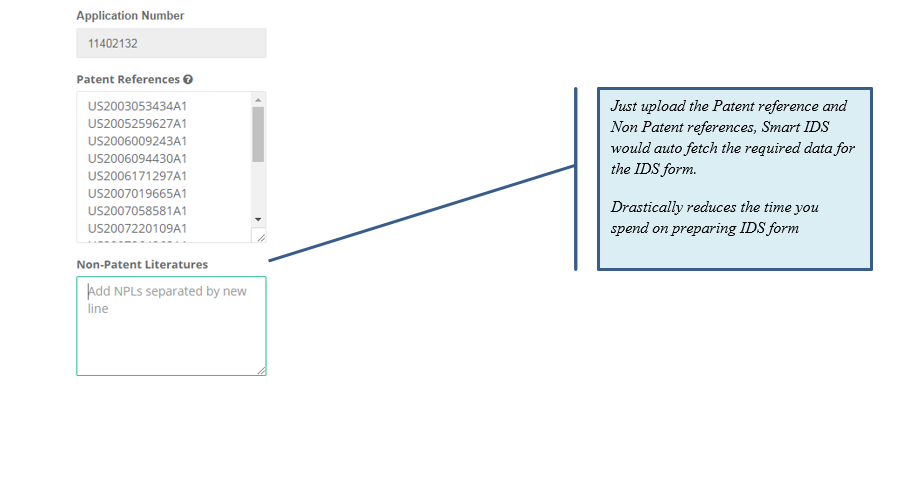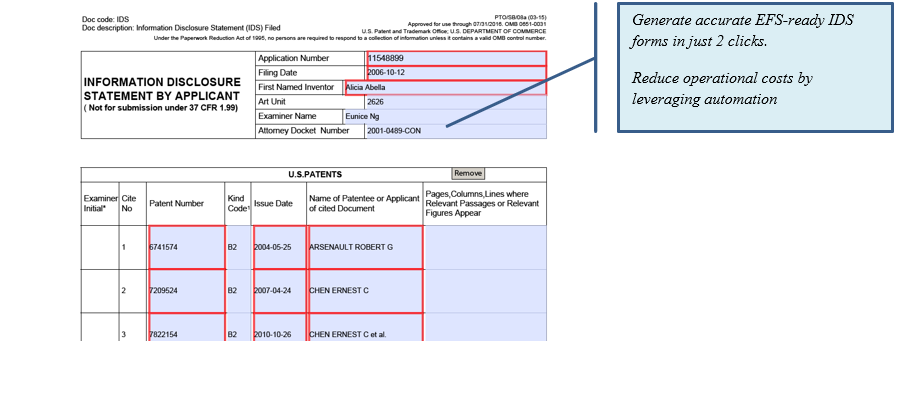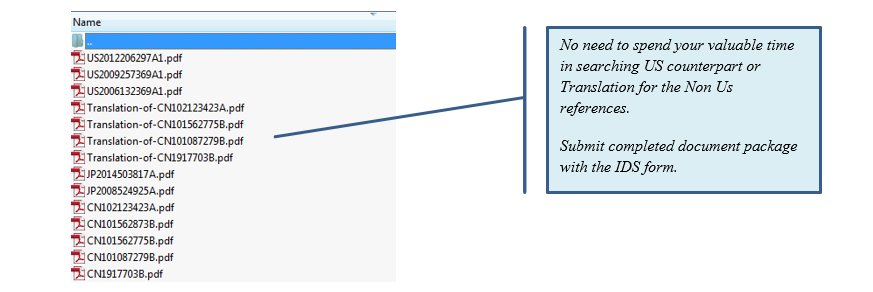In the previous article of this series, we talked about the need for an IDS management system. We focused on various problems and solutions related to IDS management our clients discussed with us. You can check that article from here – Say goodbye to Information Disclosure Statement woes!
In our experience, we found that every organization – be it a corporation or law firm – has its style of IDS management. They have their checks and balances in place, and most of them have a different organizational structure for IDS management. There are a certain set of problems that are common for all, but every organization has different feature requirements they want in an IDS management tool.
Interested in discussing your personalized IDS management Tool requirements? Fill out the form below, and let’s find out how to reduce IDS costs by 98%.
{Form}
Designing the ideal IDS Management solution for our client
One of our clients – a leading multinational technology company in China – who was familiar with our IP management software and IP analytic capabilities wanted our help to re-organize their IDS management process. They filed many patent applications and faced challenges with preparing their IDS forms, especially with their foreign filings. The arduous task involved tracking and identifying references for the applications filed globally.
The challenges they were facing:
Their attorneys and paralegals were spending hours generating IDS forms whenever they wanted to submit citations for their clients. Usually, the time is spent on checking the accuracy of the data (i.e., the inventor/assignee names, publication dates, etc).
I have enlisted below some of their most pressing issues –
- Searching across all publicly available PTO websites to gather the material prior art in all the patent families related to an application is a time-intensive process.
- Cross-checking all the references identified during the search with previously submitted ones to identify new and uncited prior art is repetitive and error-prone.
- Identifying and translating the prior art references which don’t have English counterparts for machine translations – There’s a chance of missing out on some references in a huge chunk of data.
- Preparing the IDS and relevant supporting forms take a heavy toll on the time spent on IDS filing.
- Downloading and compiling PDF copies of required references to make submission easier (Not an issue, but a suggested addition)
Even if they were training the dedicated staff for IDS who were working as book-keepers, the risk associated with human error was always existent, and the process of documentation was inconsistent, which ultimately led to a time-consuming validation process.
The Proposed Solution
Based on the problems of our client, we proposed a Smart IDS Management Software that is customized specifically for their organization.
Some of the many features of the customized IDS tool we proposed to them are listed below:
Document management
Error-free storage of citation data without duplication of storage requirements. Using the built-in repository for all IDS documents cuts costs and eliminates unnecessary errors.
Unified collaboration
- Identification of cross-citations within a given set of patents – these may or may not share a family relationship, for example – citation based on the inventors of the application.
- Ability to associate a reference with a patent application so that an IDS can be filed, citing that reference whenever necessary and within deadlines.
Automated data validations
- Automated tracking of whether a reference has been filed in an IDS or not – not only to avoid missing out on citing critical references but also to avoid duplicating citations.
- Automated suggestions of cross-citations and references
- Automated, error-free EFS-ready IDS generation with minimal overhead time saves valuable time.
Easy integrations
- Comprehensive integration with the organization’s internal docketing system and providing a platform to manage all IDS tasks seamlessly. This could enable automatic reference extractions from multiple documents saved and docketed by the company for IDS management.
- Machine-assisted citation matrices, IDS forms, and automated IDS watches to reduce operating costs.
Task distribution
An advanced set of features that can enable multiple teams in the organization to manage task distribution and ensure quality control.
It can also help streamline the workflow and eliminate missing PTO deadlines.
How do we implement the solution?
Our Product team did the initial uploading of the already filed IDSs into the tool. We took a comprehensive approach to rapid onboarding by uploading the prosecution history and creating the necessary database.
This is how we did it – we used their data and created custom groups based on their previous IDS data log. We uploaded all their previously filed patents on the IDS Management tool and categorized them based on Office Actions, Related applications, and Inventors.
Once all the documents, such as already filed IDS, were uploaded, our machine learning algorithm read through these documents to identify vital relationships between the data. The algorithm of the tool is designed to function such that while filing IDS, it automatically suggests prior art which could be considered to be filed in the IDS. These smart suggestions were aimed at facilitating the following functions –
- Reduce the risk of Non-Cited References – Need not worry about missing out on some crucial references based on suggestions from your previous filing history.
- Migration of cross-citations in just a few clicks and saves time
- Reduces supplemental IDS filings and saves costs.
Ease of use was another aspect related to the tool which was on our priority list, since if the tool is not easy enough to use, people won’t use it. So we kept things simple. While working with the tool, all you need to do is upload the identified references to the tool, and it takes care of the rest. The algorithm interacts with PTO and EP databases for automated retrieval and download of documents associated with the applications. It automatically looks up bibliographic details like publication dates, inventor names, and applicant names.
The smart IDS management tool fetches all the documents and generates a complete IDS form, along with the complete IDS package patent, in two clicks. Everything needed to be filled in the IDS form is migrated to the IDS form. You can also review and even modify the details in the review window before generating the IDS package.
Smart IDS automatically fetches the PDFs of reference and the IDS form and downloads everything as a package. It also avails the machine-translated versions of the native language documents for which English counterparts are unavailable.
We provided various trial accounts to accustom users through the process for the gradual expansion of the automation of IDS Management across the firm. The Smart IDS algorithm dashboard makes it super easy for anyone to train, optimize, and use a machine model.
Our product team and the technical team worked behind the curtains with the client’s attorneys and paralegals to make changes in the user interface to make it organization friendly.
After being implemented, here’s the final outcome.
- Reduction in the cost of filing RCEs due to missed references.
- Cost-effective in terms of search time for bookkeeping staff.
- Reduction in the prosecution time and the actual cost of preparing IDS for the client.
- Reduction of the risk of litigation.
Our client, who filed more than 20,000 IDS last year, shared with us that their operational cost has been reduced by 50% and prosecution time is 30% faster, which has led to a 25% increase in the profit.
How can we design the ideal IDS Management system for your organization?
Customization of the IDS management software is the most important aspect of establishing an automated system, and there is no one fits all approach.
The IDS management tool has to be reconditioned from the ground up by understanding the problems of each organization and developing a customized solution accordingly for them. This is done so that the IDS Manager tool can effortlessly deal with common problems such as references from counterpart applications, search reports, international search reports, newly added applications to a family, cross-checking for prior references, and many more time-consuming issues specific to managing IDS filings for a patent portfolio.
Our team acts as an extension of yours, identifying improvements in the processes and systems to achieve better results. Our blended delivery model allows round-the-clock support when required.
We are focused on delivering innovative solutions for IDS management, and our IDS offering is continually expanding and improving. We’re already delivering cost savings to our existing clients by automating the processes of IDS. The smart tool can help make IDS management all the more efficient and effective for your organization.
Want to know how the IDS tool can be customized to your organization’s needs? Fill out the form below, and book your free trial now.
Authored by: Gaurav Sharma, Solutions

